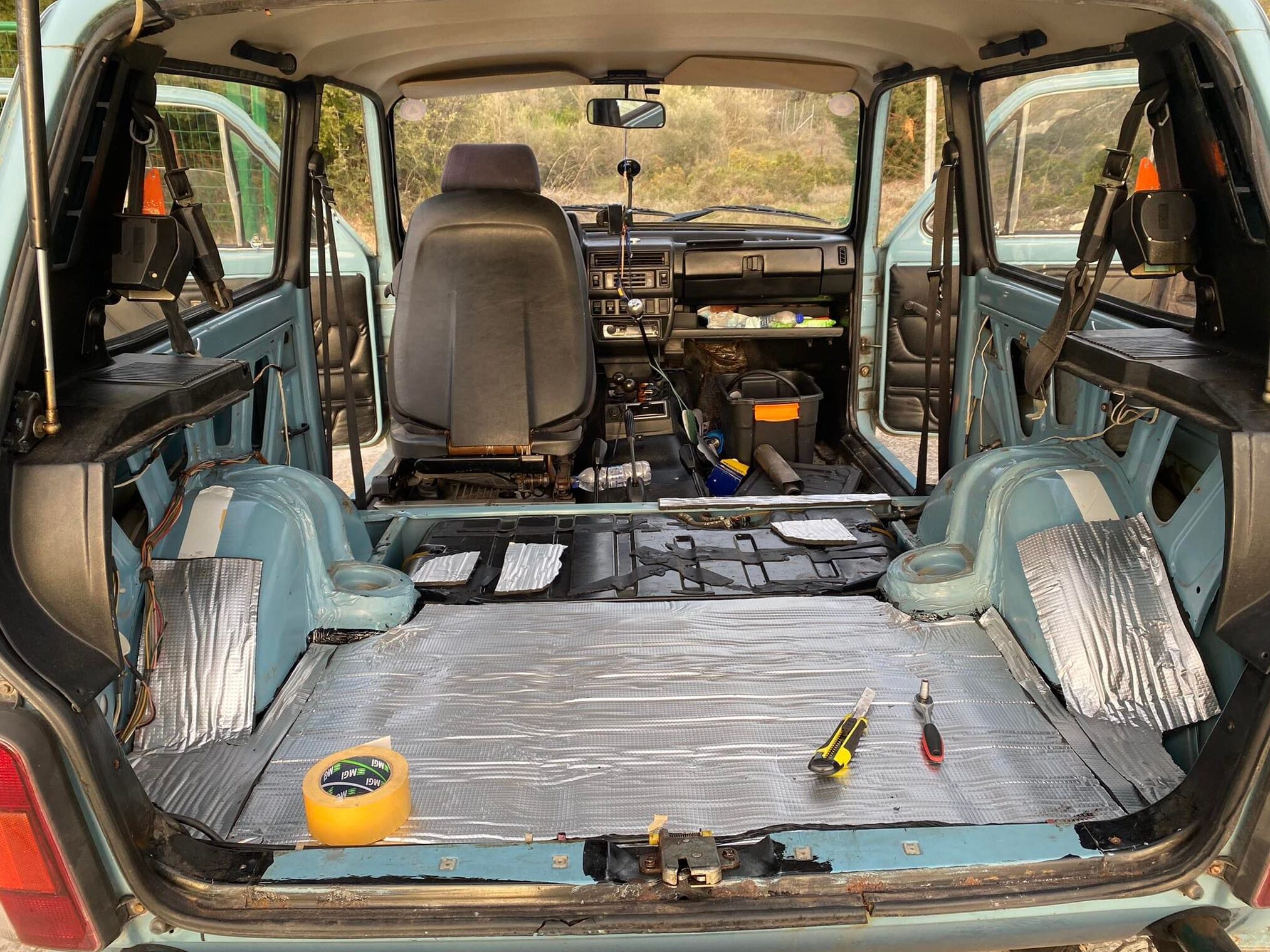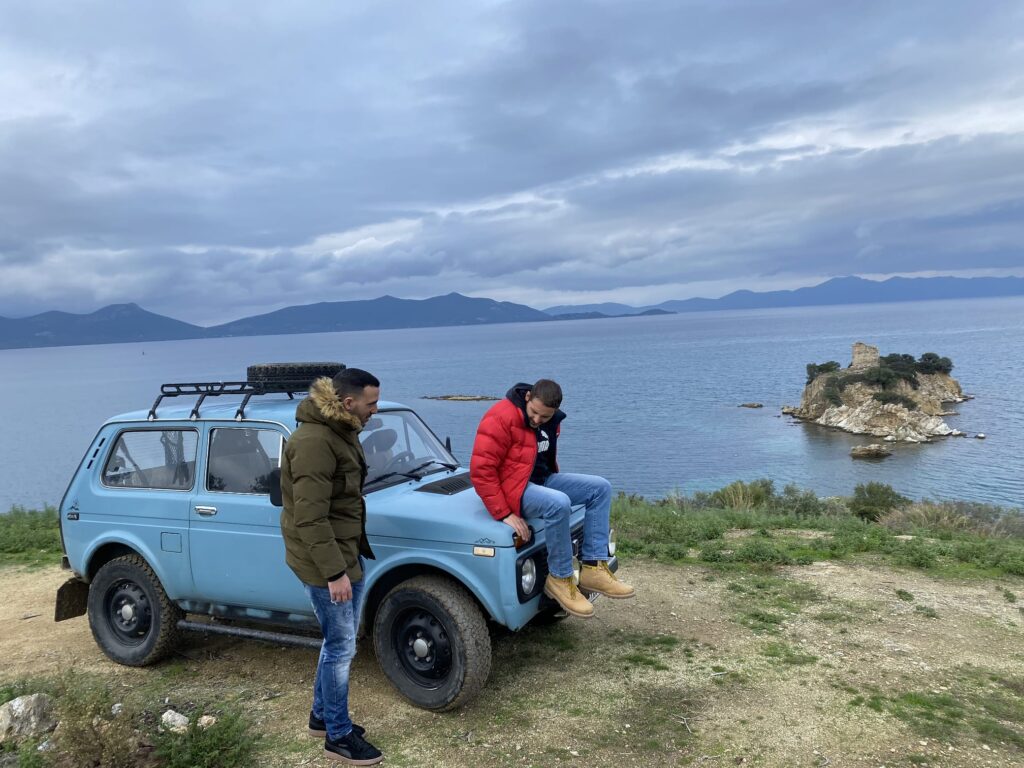Introduction
From a young age, I was captivated by a legendary car designed to conquer rough conditions, including mud and snow.

The Lada Niva, initially introduced in 1977 by Soviet automaker VAZ in the city of Tolyatti, Russia (coincidentally, the town my mom grew up in), became an international success in the 1980s due to its rugged off-road capabilities, maintaining production through economic challenges in the 1990s and receiving a rebrand as the Lada 4×4 in the 2000s; it remains popular for its simplicity and durability, making it a longstanding staple in the off-road vehicle market.

Perfect Timing
As one of my lifelong desires was to own this car, in December 2021, I began actively searching for an affordable option, considering that I already had a primary vehicle for my daily transportation needs.
A young forester from the Attica region, a father of three and an avid hunter, was in the process of planning to purchase a larger vehicle to accommodate his family.
After coming across his advertisement post on a Greek Facebook page titled “Cars for Hunters,” I promptly contacted him, and we reached an agreement for a price of less than 2,000 euros. I didn’t inspect the car, nor did I give it much consideration; I simply knew that I wanted it.
And so i got it, our first photo:

While i was staying in Athens, where i bought the car, i decided to hang around a bit longer until i would go back to my hometown, Loutra Aidipsou, to show it to my father.
Unfortunately, just two days after purchasing the car and the day before I had planned to return to Aidipsos, I received a call from my aunt Anastasia, informing me that my father was dying and that I likely wouldn’t make it from Athens within the next two hours. In a rush, I drove at a speed I had never before experienced, only to arrive at an empty house.

The car’s condition
The car was in a horible condition, bordering on dangerous.
After driving it one Sunday afternoon from Athens to my hometown in the mountainous Pagontas area, I began to detect a pervasive gasoline odor so overwhelming that it made me dizzy and gave me a headache. Without hesitation, I pulled over, opened the hood, and discovered that the mechanical fuel pump was spewing large quantities of gasoline while transferring it to the carburetor chamber.
Fortunately, I had my tools in the toolbox in the car’s rear, so I decided to tighten the main pump bolt, hoping it would suffice to get me to my destination, which miraculously it did.
Embrace your gut feeling
I never gave up on this car; it gave me a very tough time, and my best friend Nikos played the role of babysitter when I called him, repeatedly announcing that the car had stalled in the middle of the road once more and I needed a lift. Patiently, he always came to my rescue with his father’s Nissan Navara truck, towing both me and my cantankerous old blue Russian “grandpa.”

I was deeply committed to turning my dreams into reality, envisioning countless 4×4 mountain expeditions, fishing trips, and journeys to places inaccessible to ordinary cars with this special vehicle. To achieve this, I embarked on a thorough exploration of the car’s blueprints, identifying its strengths and weaknesses, and learning how to address them. I turned to YouTube, where I found kindred spirits, equally enamored by this little beast, sharing their DIY fixes and upgrades.

With determination, I tackled each issue one by one, often relying on YouTube tutorials or enlisting the assistance of my mechanic friends, who graciously lent their expertise. The toil and effort were undeniably worthwhile, as the moments this car provided for me and my loved ones were nothing short of extraordinary.

Leaving things better than you found them
The car grew increasingly reliable with each passing weekend as I devoted my time to working on it.





Always learn new things
Learning New Things: I firmly believe that everything we engage in has the potential to profoundly impact our future, equipping us with valuable skills to pass on to future generations and enhancing our self-reliance in life.

While the car left me stranded in remote locations on numerous occasions during my ownership, I often found myself standing there, attempting to diagnose the issue and searching for a solution to repair it, all in a bid to safely reach my destination. This experience taught me the invaluable lesson that in life, one must acquire a sufficient breadth of knowledge to foster self-reliance and independence.
He was ready
While I cherished the most rewarding period with my car, meticulously addressing every mechanical and electronic aspect, I remained mindful of its original purpose. When I first acquired it, driving the car was neither feasible nor safe. Nevertheless, it gradually transformed into the robust workhorse and formidable off-road adventurer it was initially designed to be. As I contemplated my future, I sensed that the time had come to embark on new experiences and career opportunities abroad.

Recognizing this, I realized that my beloved companion was destined to benefit others, brimming with vitality, nurtured by its owner and the people it had encountered. A farmer from the Peloponnese region eventually became the new custodian of the car, marking the next phase of its lifecycle—a dedicated aide in the fields, ready to work with unwavering strength and purpose.
This car became my closest companion during one of the most challenging periods of my life. It played a pivotal role in my recovery, imparted valuable life and practical lessons, and, in return, I dedicated myself to restoring it to a fully functional state.
How people treated the car
Over time, as people heard me passionately discuss the car and witnessed how I cared for it, perceptions began to shift. What was initially regarded as a rusted metal can, evolved in their minds into an unstoppable beast and a beautiful raw example of early automotive design.
Gradually, the car earned respect and even affection from those around me, with some individuals personifying it more as a companion than a mere object. This experience imparted yet another lesson, which I will elaborate on in the final section of this article.

Epilogue
The value of things lies not in their price, but in the attention and effort we invest in them.
As a point of reference, the same principle applies to how you treat both people and your family. The effort you invest in nurturing human relationships directly correlates with the development of respect and increased value within them. Consequently, your behavior towards these individuals (or things) influences how others perceive and reciprocate with the same level of respect. This underscores the importance of cultivating meaningful connections and demonstrating respect as it can create a ripple effect in how others treat and value them.

Never relinquish your dreams or the instincts that guide you; pursue them with determination.




Comments by Manhood Reset